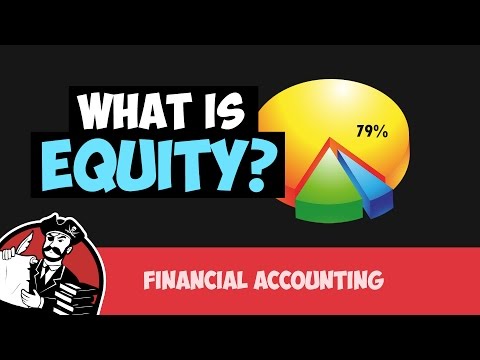2.3: Account Types
- Page ID
- 26176
Account Types
Transactions can be summarized into similar group or accounts. A company compiles a list of accounts to make the chart of accounts. Need more information about what an account is? Watch this brief video.
The video explained that accounts are like file folders. What are some things a company might have? A company might have cash or a checking account, invoices for money we will receive from customers later, bills we have to pay, and we might own property like land, building or equipment. We have 5 basic categories for accounts:
- Asset: Something a business has or owns
- Liability: Something we owe to a non-owner
- Equity: Something we owe to the owners or the value of the investment to the owner
- Revenue: Value of the goods we have sold or the services we have performed
- Expenses: Costs of doing business
Let’s look at each one individually. We will look at the broad picture of each category as you will learn the details later in the course.
Assets: Assets are something you own or have and they are resources you expect to gain a benefit from in the future. Depending on the nature of the business there are many things that can be classified as assets.
Some examples of assets are:
- Cash (refers to the business cash available but can also be a checking or savings account)
- Office Supplies or other prepaid expenses (any expenses the business pays in advance)
- Accounts receivable (amount we will receive from customers at a later date)
- Inventory (items we intend to sell later)
- Equipment (value of equipment purchased)
- Building (value of building purchased)
- Land (value of land purchased)
Liabilities: Liabilities are something that business owes to a non-owner (debt and business obligations). Liabilities can easily be identified as the account will most often end in the word “payable” since it is something we must pay someone in the future.
Some examples of liabilities are:
- Accounts Payable (bills the company must pay)
- Sales Tax Payable (sales tax obligations)
- Wages Payable (obligations to employees for work performed),
- Payroll Taxes Payable (obligations paid on a monthly or quarterly to state, local or federal agencies)
- Unearned Revenue (down payments received on work to be completed in the future)
- Mortgage Payable (for example mortgage on business property)
- Notes Payable (business financial obligations from signing a promissory note).
Equity: Equity accounts represent the value of the owner’s investment in the company. The Equity accounts are different based on the type of company.
- For sole-proprietorship and partnership, a Capital account is used to record the investment of the owners and income earned by the company. A Withdrawal (or drawing) account is used when the owner takes money out for personal use.
- For corporations, a Common Stock account is used to record the investment of the owners. A Retained Earnings account is used to record the earnings of a corporation and to record when earnings are given back to the owners in the form of dividends.
Revenues represent the value of the goods or services provided. Thanks to the revenue recognition principle, we record revenue when we actually do the work by performing a service or delivering a product. Examples of revenue accounts include:
- Service Revenue (revenue from completing a service, could be specific like plumbing service revenue, accounting service revenue, photography service revenue, etc.)
- Sales Revenue (value of products you sell)
- Interest Revenue (value of interest earned on investments or bank accounts)
Expenses are costs to the company and reflect the outflow of money. What matters is have we incurred or used the expense. These expenses represent the all costs of doing business and are used in order to generate the revenue. Examples of expenses accounts include (notice how most expense accounts end in the word “expense”):
- Cost of Goods Sold (what we paid for inventory we have sold)
- Utilities Expense (cost of utilities)
- Wages Expense (cost of employee’s earnings)
- Rent Expense (cost of renting office space or equipment)
- Supplies Expense (cost of supplies used)
- Insurance Expense (cost of insurance used)
- Advertising Expense (cost of advertising)
- Bank Fees Expense (cost of bank fees charged by the bank)
Below is an example of a chart of accounts for Metro Courier, Inc. which is a corporation. Notice how the chart is listed in the order of Assets, Liabilities, Equity, Revenue and Expense. This order makes it easy to complete the financial statements. Click Metro COA for a printable copy.
| Metro Courier Inc. | |
| Chart of Accounts | |
| Account Name | Account Type |
| Cash | Asset |
| Supplies | Asset |
| Accounts Receivable | Asset |
| Prepaid Rent | Asset |
| Inventory | Asset |
| Office Equipment | Asset |
| Building | Asset |
| Land | Asset |
| Accounts Payable | Liability |
| Interest Payable | Liability |
| Wages Payable | Liability |
| Sales Tax Payable | Liability |
| Unearned Revenue | Liability |
| Income Tax Payable | Liability |
| Social Security Tax Payable | Liability |
| Mortgage Payable | Liability |
| Notes Payable | Liability |
| Common Stock | Equity |
| Retained Earnings | Equity |
| Service Revenue | Revenue |
| Interest Revenue | Revenue |
| Utilities Expense | Expense |
| Rent Expense | Expense |
| Supplies Expense | Expense |
| Wages Expense | Expense |
| Taxes Expense | Expense |
| Insurance Expense | Expense |
| Bank Fees Expense | Expense |
You can create your own master chart of accounts for use in this course and build on it as we go along. You should be able to complete the account type column and some of the account descriptions. Click Chart of Accounts to access a google spreadsheet that you can download and use during the course.
Answer the following questions about the types of accounts that used to record business activities. Remember to check your answer by rating your confidence: maybe? , probably. definitely!
- Accounting Principles: A Business Perspective. Authored by: James Don Edwards, University of Georgia & Roger H. Hermanson, Georgia State University. Provided by: Endeavour International Corporation. Project: The Global Text Project . License: CC BY: Attribution
- What is an Asset (Financial Accounting Tutorial #8). Authored by: Note Pirate. Located at: youtu.be/PWgIKbv3VWQ?list=PL_PmoCeUoNMIX3zP2yYSAq8gi6irBVh-1. License: All Rights Reserved. License Terms: Standard YouTube License
- What is a Liability? (Financial Accounting Tutorial #9). Authored by: NotePirate. Located at: youtu.be/fqrmYiLl9dk?list=PL_PmoCeUoNMIX3zP2yYSAq8gi6irBVh-1. License: All Rights Reserved. License Terms: Standard YouTube License
- What is Equity (Financial Accounting Tutorial #10). Authored by: NotePirate. Located at: youtu.be/OO3pV3L7nFI?list=PL_PmoCeUoNMIX3zP2yYSAq8gi6irBVh-1. License: All Rights Reserved. License Terms: Standard YouTube License
- Monday Morning Minute Chart of Accounts Bookkeeping Basics. Authored by: Stephanie Horne. Located at: youtu.be/xEjWZndqK0E. License: All Rights Reserved. License Terms: Standard YouTube License



